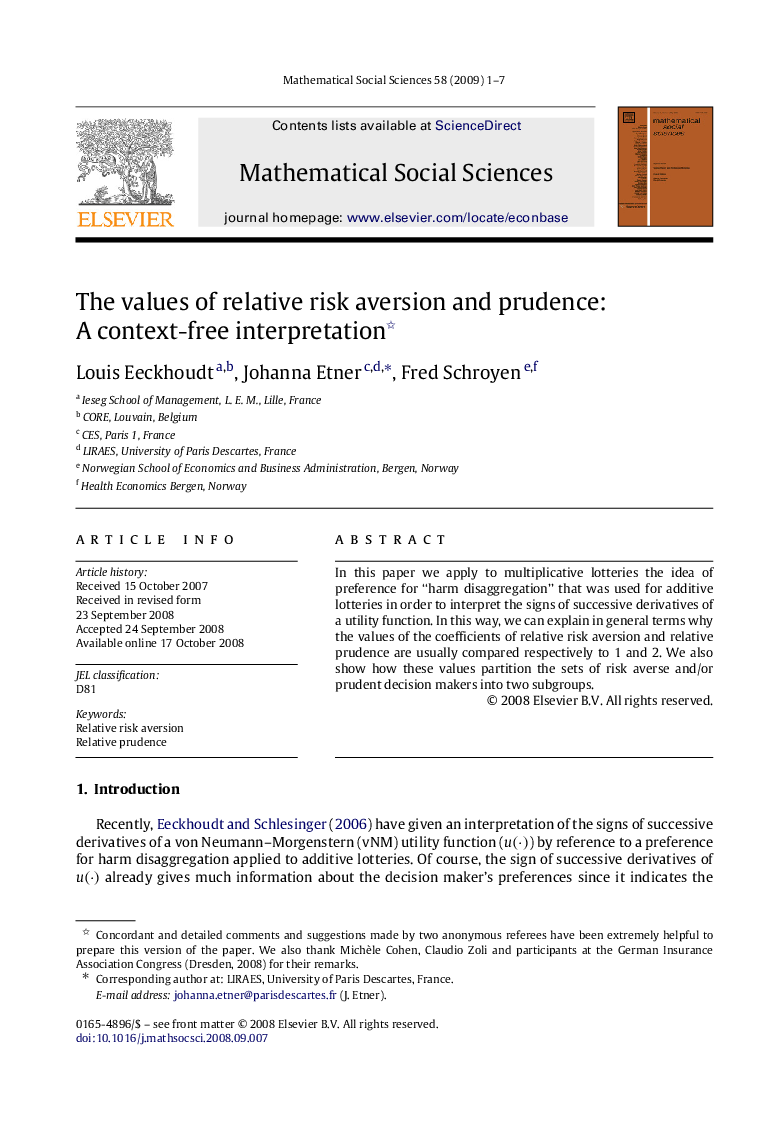| Article ID | Journal | Published Year | Pages | File Type |
|---|---|---|---|---|
| 973299 | Mathematical Social Sciences | 2009 | 7 Pages |
Abstract
In this paper we apply to multiplicative lotteries the idea of preference for “harm disaggregation” that was used for additive lotteries in order to interpret the signs of successive derivatives of a utility function. In this way, we can explain in general terms why the values of the coefficients of relative risk aversion and relative prudence are usually compared respectively to 1 and 2. We also show how these values partition the sets of risk averse and/or prudent decision makers into two subgroups.
Related Topics
Physical Sciences and Engineering
Mathematics
Applied Mathematics
Authors
Louis Eeckhoudt, Johanna Etner, Fred Schroyen,
